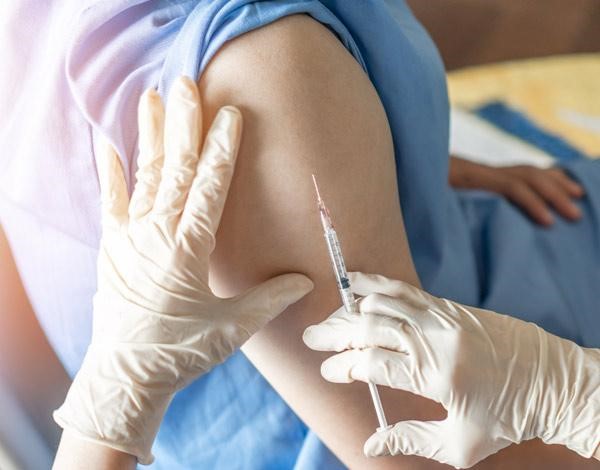Last updated on December 24th, 2024 at 11:38 am

Typhoid Treatment – Typhoid fever is caused by the bacterium Salmonella Typhi and is a serious and potentially life-threatening illness that continues to be a global health concern. Typhoid is primarily transmitted through contaminated food and water, making it a significant public health challenge, especially in areas with poor sanitation and hygiene. Effective treatment is essential to combat this infectious disease and prevent its complications.
Typhoid Treatment and Precaution
The best treatment and precautions for Typhoid are as follows:
1. Antibiotics as the Mainstay of Treatment
- Antibiotics are the cornerstone of typhoid fever treatment. They are used to eliminate the Salmonella Typhi bacteria from the body.
- Normally prescribed antibiotics contain ceftriaxone, ciprofloxacin, and azithromycin. The choice of antibiotic depends on various factors, including the patient’s age, the severity of the infection, and local antibiotic resistance patterns.
2. Duration of Antibiotic Treatment
- Antibiotic treatment typically lasts for 7 to 14 days. Completing the full course of antibiotics is crucial to ensure the bacteria are completely eradicated from the body.
- Destroying antibiotics prematurely can guide to antibiotic resistance, where the bacteria evolve slightly responsive to treatment.
3. Supportive Care
- Maintaining hydration is essential in typhoid fever treatment. High fever, diarrhoea, and vomiting can lead to significant fluid loss. Oral rehydration solutions (ORS) or intravenous (IV) fluids may be needed to prevent dehydration.
- Rest and adequate nutrition help the body recover. Patients are advised to consume a diet that is easy on the digestive system, such as bland foods and clear fluids.
4. Vaccination and Prevention
- Prevention is a crucial component of typhoid control. Typhoid vaccines, including Ty21a and Vi capsular polysaccharide vaccines, are available and recommended for individuals living in or travelling to typhoid-endemic areas.
- Promoting proper hygiene practices, safe food handling, and access to clean drinking water can help prevent the spread of the disease.
> Consult a doctor and Order Medicine Online
5. Monitoring and Follow-Up
- Patients with typhoid fever should be closely monitored by healthcare professionals. Regular check-ups, blood tests, and clinical assessments are essential to track progress and ensure that treatment is effective.
- In severe cases, hospitalization may be necessary, particularly if complications like intestinal perforation or sepsis occur.
6. Emerging Trends in Typhoid Treatment
- Ongoing research and development efforts are focused on finding new and more effective antibiotics for typhoid fever treatment.
- Typhoid conjugate vaccines (TCVs) have shown promise in reducing the burden of the disease, particularly in endemic regions.
7. Antibiotic Resistance and Challenges
- Antibiotic resistance is a growing concern in the treatment of typhoid fever. Over time, some strains of Salmonella Typhi have developed resistance to commonly used antibiotics. This makes antibiotics more complex and underscores the importance of appropriate antibiotic stewardship.
- Healthcare providers must stay informed about local antibiotic resistance patterns to select the most effective treatment.
8. Community Engagement and Education
- Community engagement plays a vital role in typhoid fever control. Public awareness campaigns can educate people about the risks of typhoid, the importance of vaccination, and the need for proper sanitation.
- Encouraging individuals to seek medical care early when symptoms arise can help prevent the spread of the disease within communities.
9. Global Efforts in Typhoid Control
- Several international organizations and governments are working together to reduce the burden of typhoid worldwide. Initiatives include vaccine campaigns in high-risk areas and improved access to clean water and sanitation facilities.
- Collaborative efforts are also focused on surveillance to better understand the epidemiology of typhoid and guide public health interventions.
10. Personal Responsibility
-
- Individuals can contribute to typhoid control by practising good hygiene, including handwashing with soap and water before eating and after using the toilet.
- Travelers to endemic regions should consider typhoid vaccination and follow safe food and water precautions.
Read: What are Generic Medicines?
Typhoid Fever Treatment
Typhoid fever remains a significant health challenge, particularly in regions with inadequate sanitation and healthcare infrastructure. While antibiotics are effective in treating the disease, their overuse and misuse can contribute to antibiotic resistance. Thus, a holistic approach that includes prevention through vaccination, improved hygiene, and public awareness is crucial in reducing the impact of typhoid fever.

Remedies of Typhoid Fever
Typhoid fever is a potentially life-threatening illness that primarily affects the digestive system. Timely and effective treatment is essential to manage the symptoms and prevent complications. In this article, we will explore the various aspects of typhoid fever treatment, including the latest advances and the role of nutrition in recovery.
1. Traditional Typhoid Fever Treatment
Antibiotics: Historically, antibiotics like ciprofloxacin, ceftriaxone, and azithromycin have been the cornerstone of typhoid fever treatment. These drugs are prescribed based on the severity of the infection and local antibiotic resistance patterns.
Hydration: Maintaining proper fluid balance is crucial, as typhoid fever can cause dehydration due to high fever, diarrhoea, and vomiting. Oral rehydration solutions (ORS) or intravenous (IV) fluids may be necessary.
Rest: Adequate rest is essential to help the body fight the infection and recover from weakness.
2. Latest Treatment for Typhoid Fever
Advances in treatment have led to the development of new drugs, such as azithromycin and fluoroquinolones, which may be used depending on the antibiotic resistance in the region. These newer drugs can be more effective in treating typhoid fever.
In some cases, especially in severe or drug-resistant cases, a combination of antibiotics may be employed to enhance the treatment’s efficacy.
Typhoid conjugate vaccines (TCVs) have also emerged as a preventive measure in high-risk areas, reducing the overall incidence of typhoid fever.
3. Injection for Typhoid Fever Treatment
Intravenous antibiotics might be administered in severe cases or when oral antibiotics are not tolerated by the patient. Intravenous treatment ensures direct delivery of the medication into the bloodstream for faster action.
Injectable antibiotics like ceftriaxone are commonly used for such cases, and the choice of injection versus oral medication depends on the patient’s condition and the physician’s assessment.
4. Typhoid Fever Treatment and Food
- Nutrition plays a vital role in typhoid fever recovery. A bland, easily digestible diet is recommended to reduce strain on the digestive system.
- Patients are advised to avoid spicy, oily, and heavy foods that can irritate the stomach.
- Consuming plenty of fluids, including water, ORS, and clear broths, helps in staying hydrated and maintaining electrolyte balance.
- Once the fever subsides and the patient’s appetite returns, a diet rich in proteins, vitamins, and minerals should be gradually reintroduced to aid in the healing process.
Conclusion:
Typhoid fever treatment has evolved with advancements in medical science, offering a range of antibiotic options and preventive measures. Early diagnosis and appropriate antibiotic therapy remain the key to successful management.
Coupled with proper nutrition and hydration, these treatments help patients recover from typhoid fever and reduce the risk of complications. Individuals in typhoid-endemic regions must stay informed about the latest treatment options and seek medical attention promptly if they suspect they have contracted the disease.
FAQs on Typhoid Treatment
Q1. What is the duration of typhoid fever treatment with antibiotics?
The typical course of antibiotics for typhoid fever treatment lasts between 7 to 14 days. It is essential to complete the full course, even if symptoms improve earlier, to ensure the complete eradication of the Salmonella Typhi bacteria and prevent antibiotic resistance.
Q2. Can typhoid fever be treated at home, or is hospitalization required?
In many cases, typhoid fever can be treated on an outpatient basis with antibiotics and supportive care, such as oral rehydration solutions for hydration. However, severe cases or those with complications may require hospitalization for closer monitoring, intravenous antibiotics, and fluid replacement therapy.
Q3. Are there any dietary restrictions during typhoid fever treatment?
Initially, it is advisable to consume a bland and easily digestible diet to minimize strain on the digestive system. This may include clear soups, rice, and boiled vegetables. Spicy, oily, and heavy foods should be avoided. As the patient’s appetite returns and they recover, a well-balanced diet with proteins, vitamins, and minerals should be gradually reintroduced to support the healing process.
Related Links:
